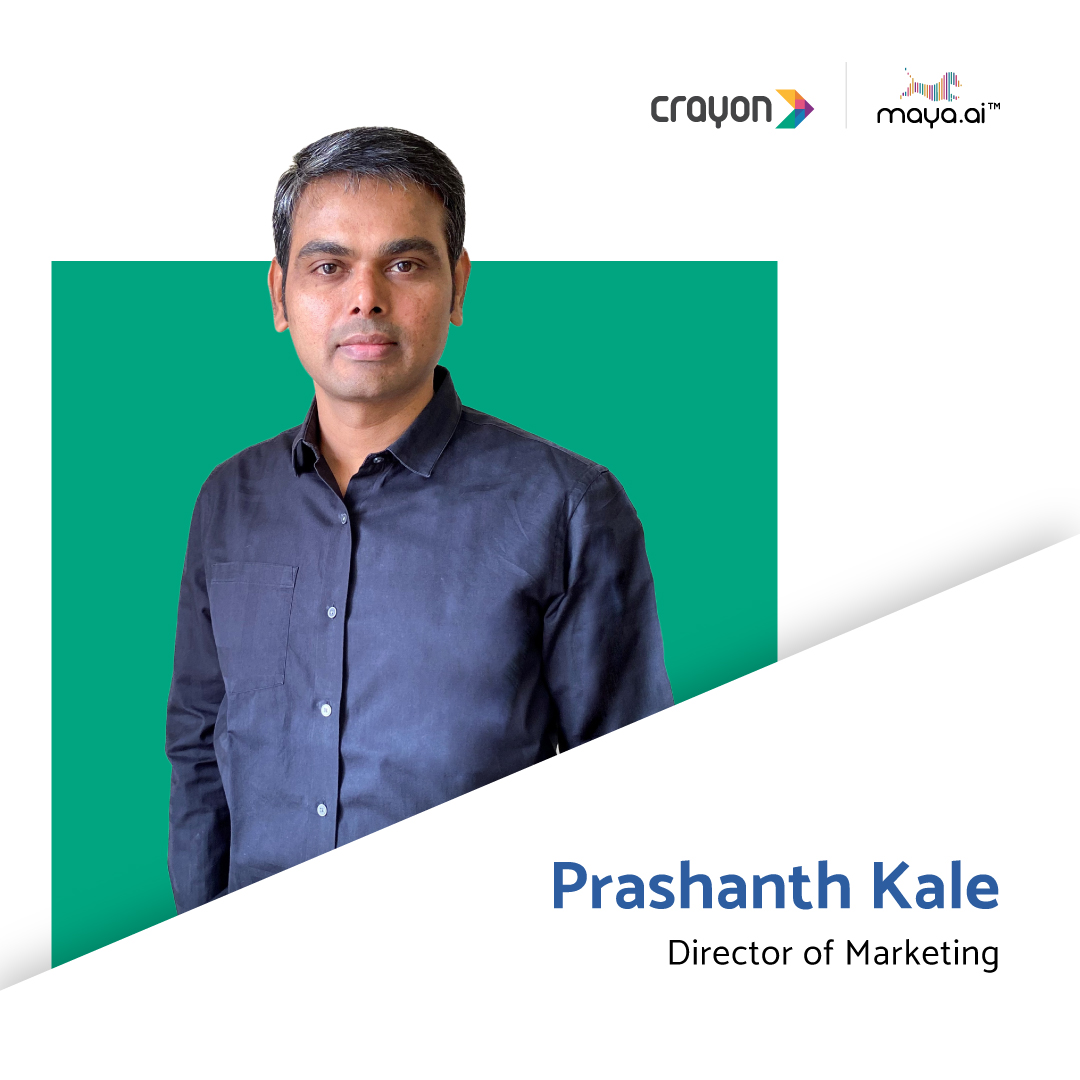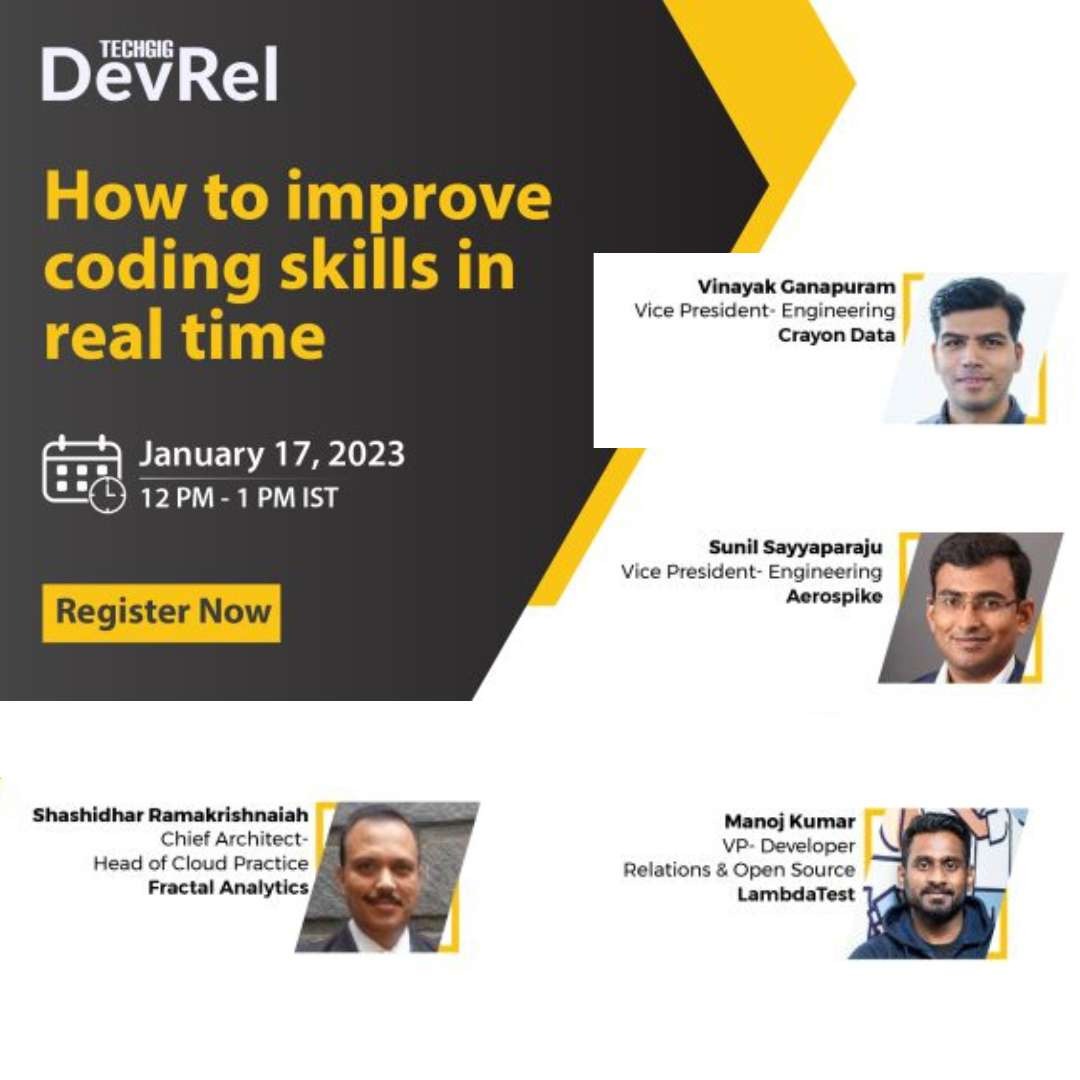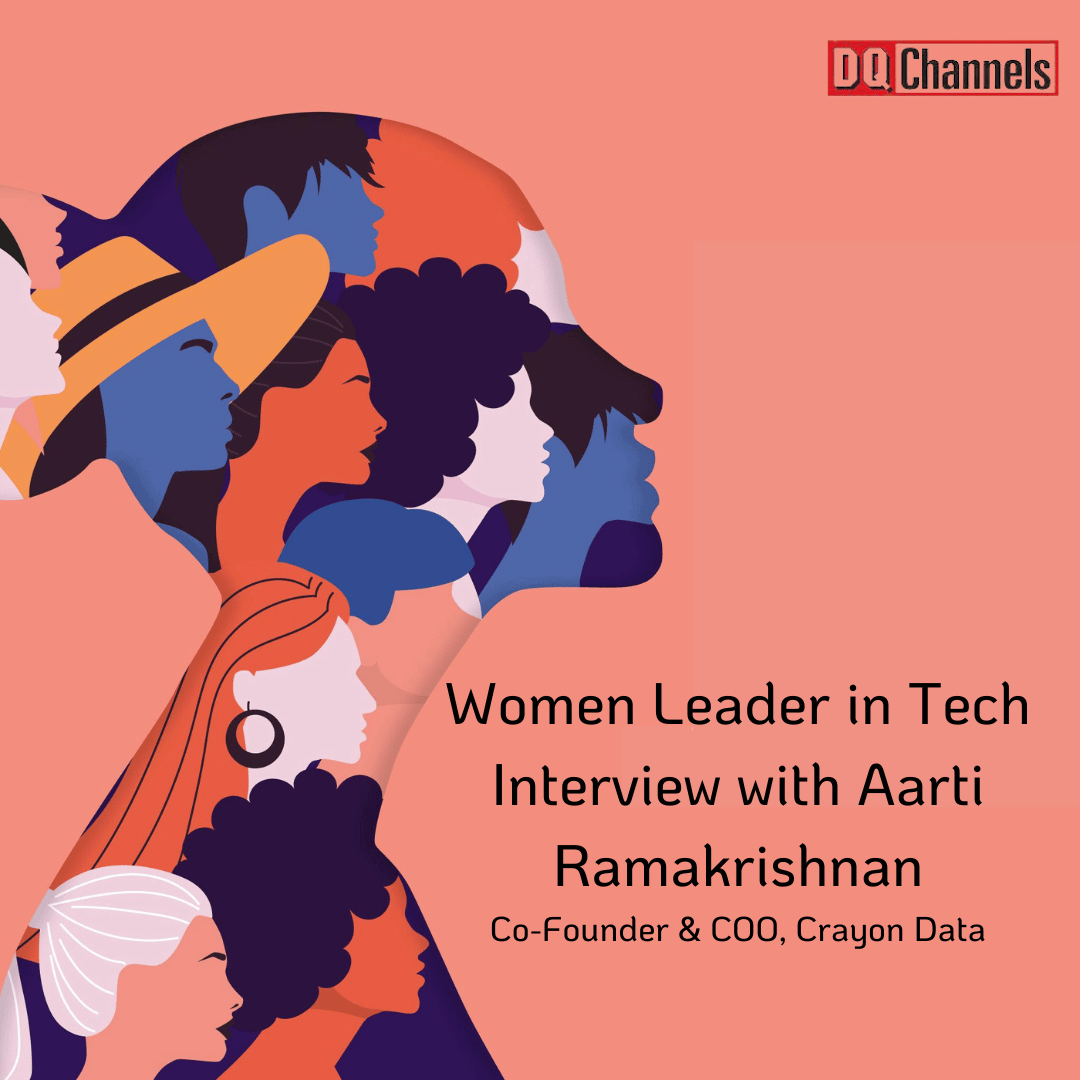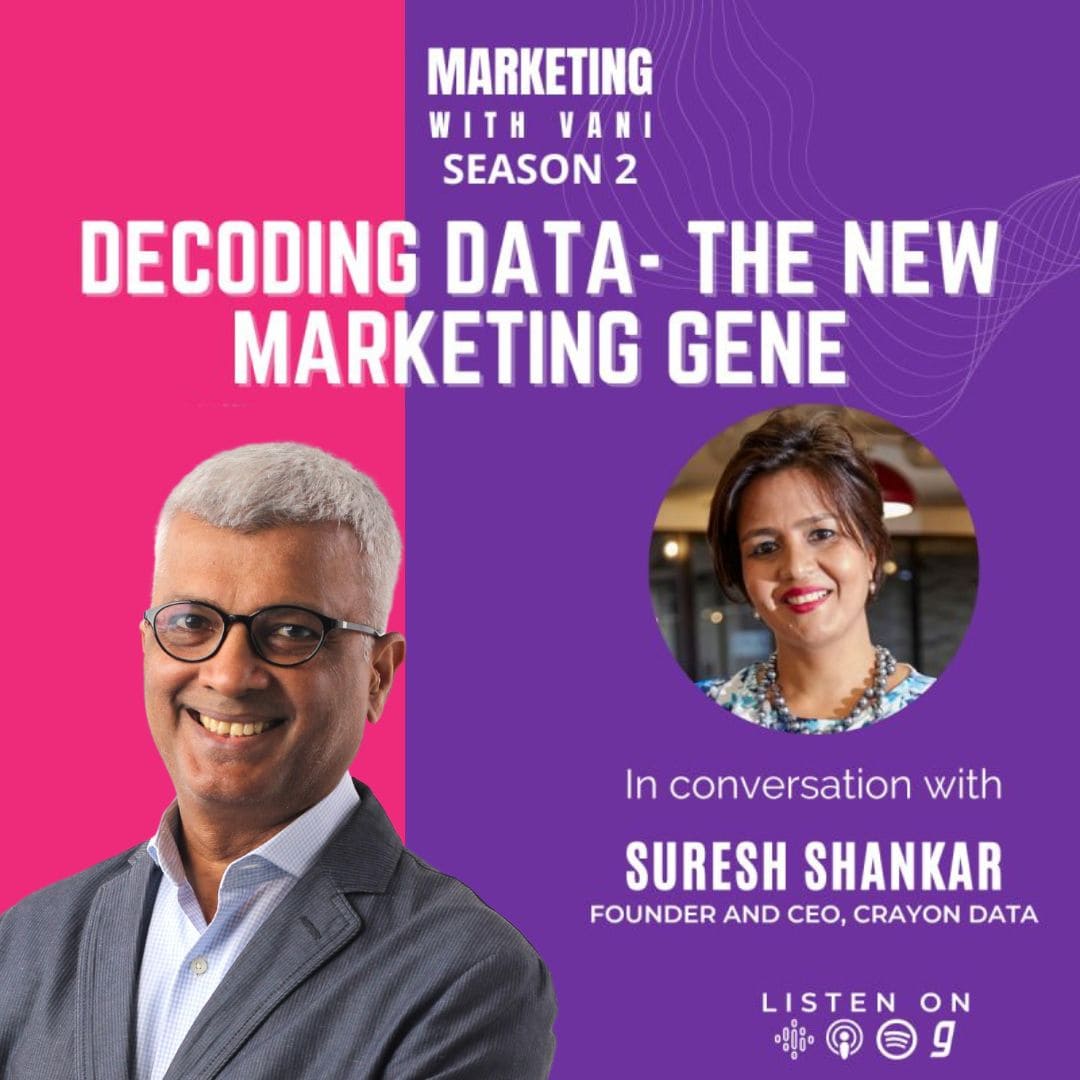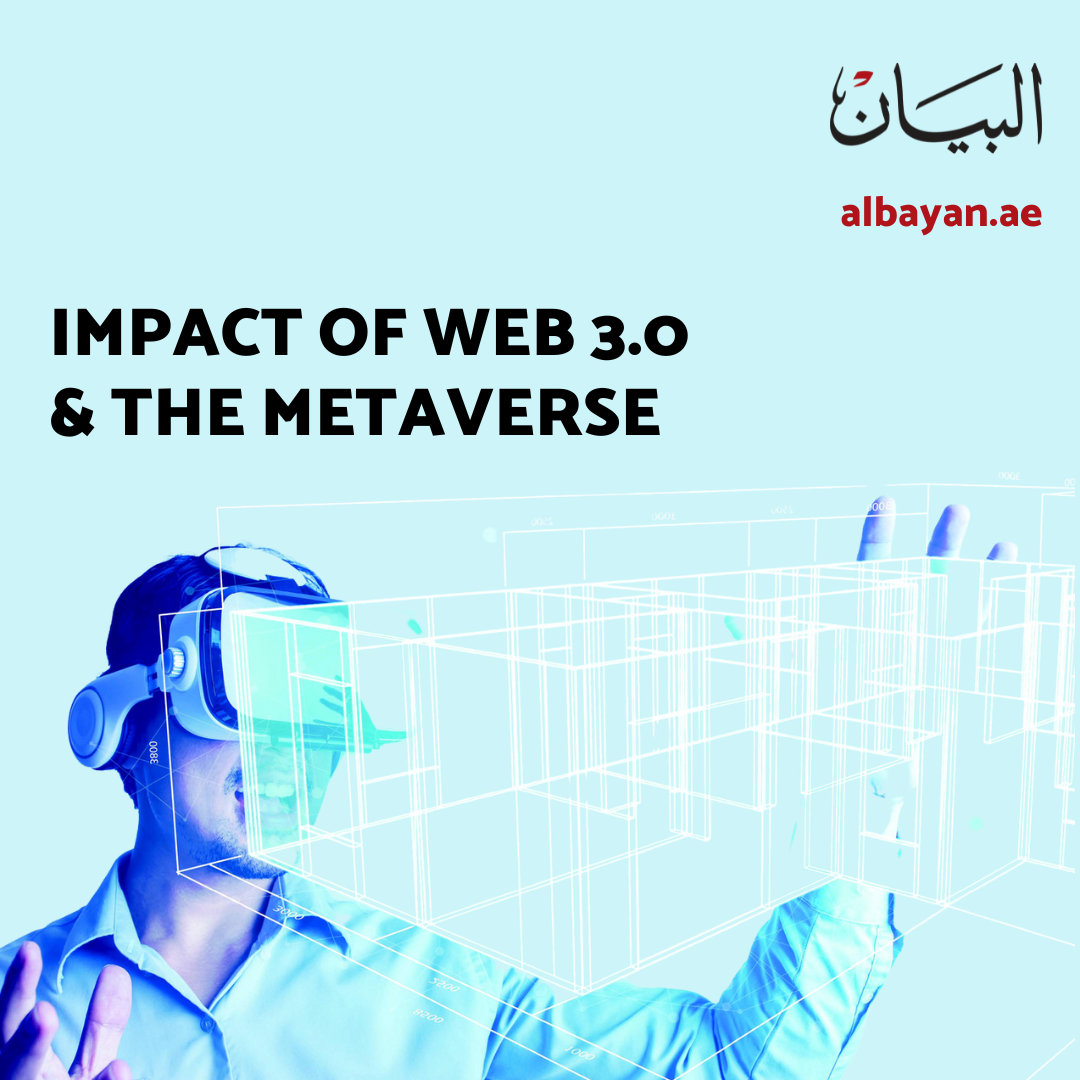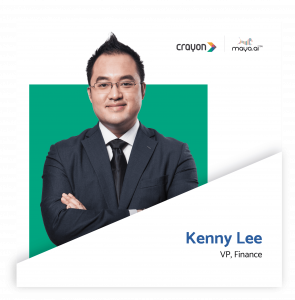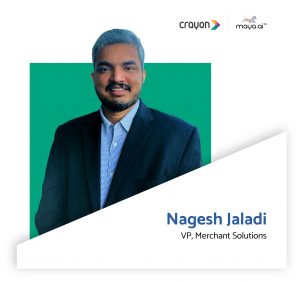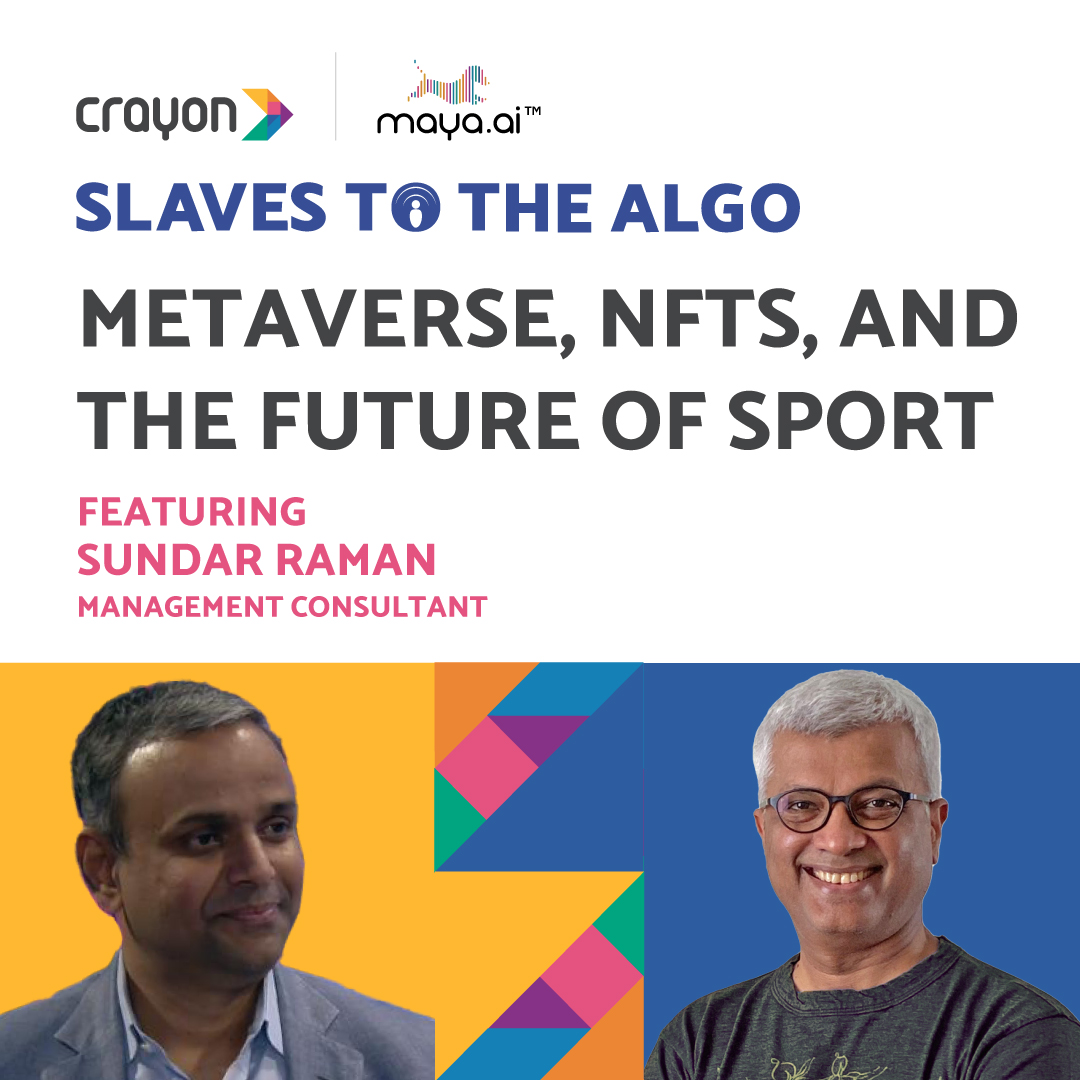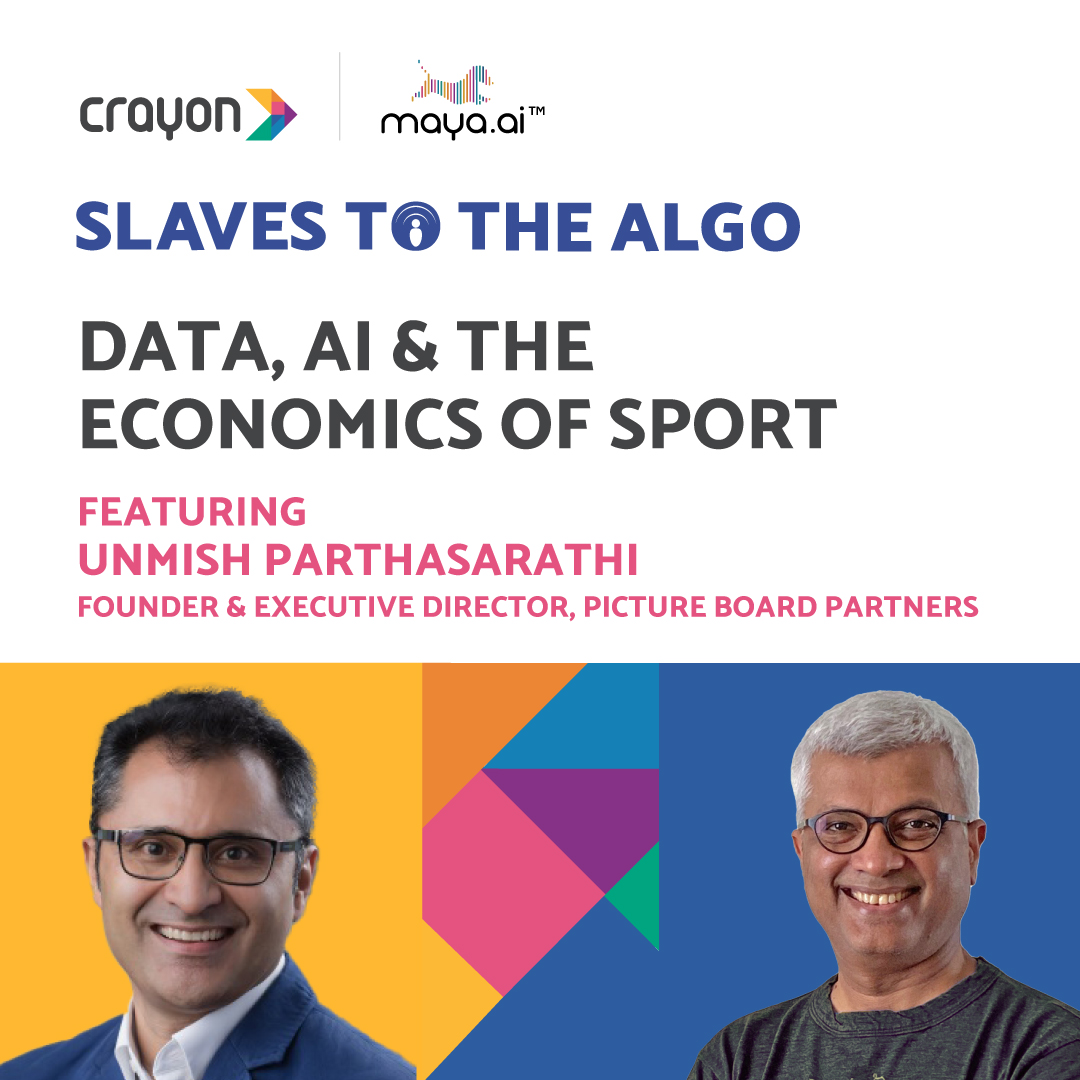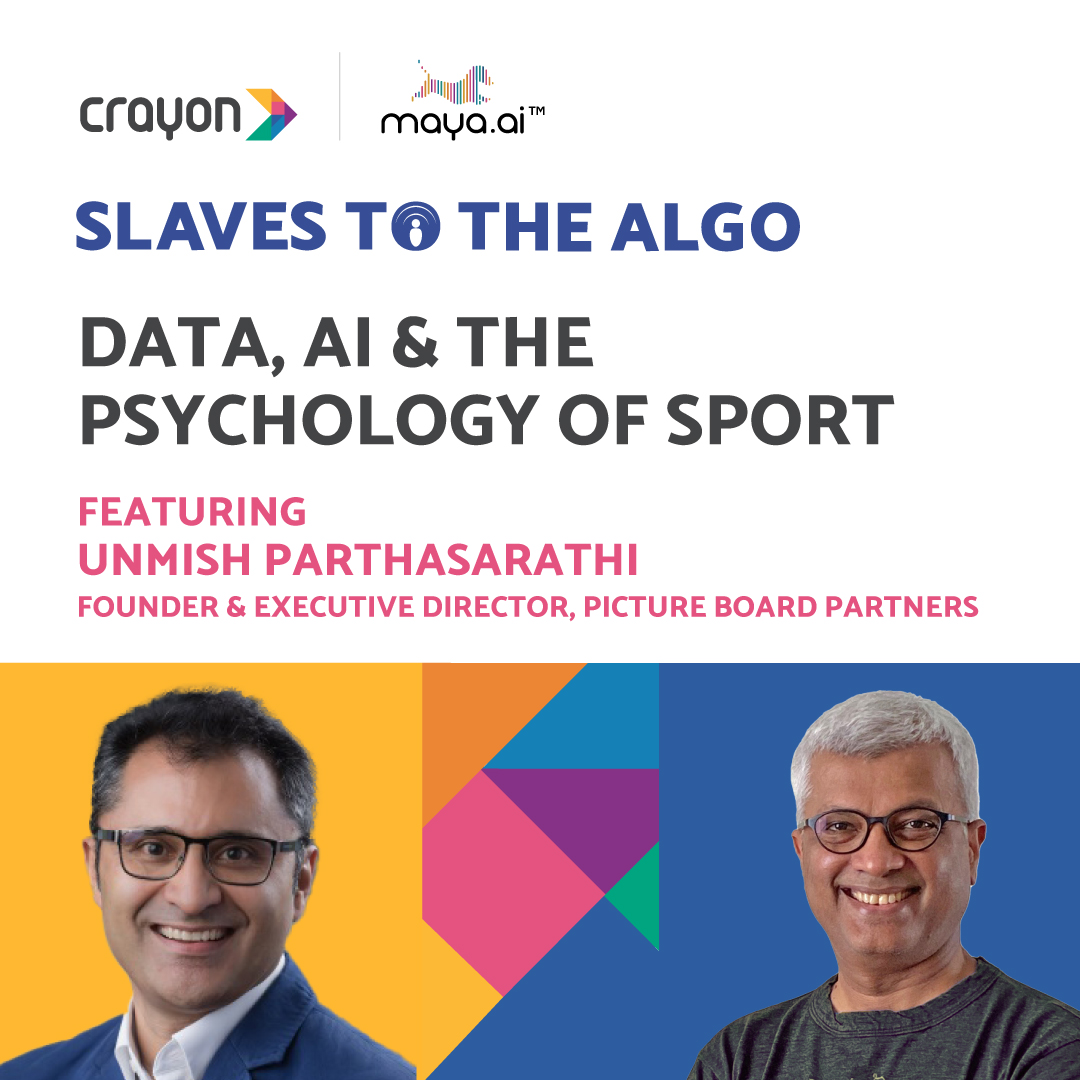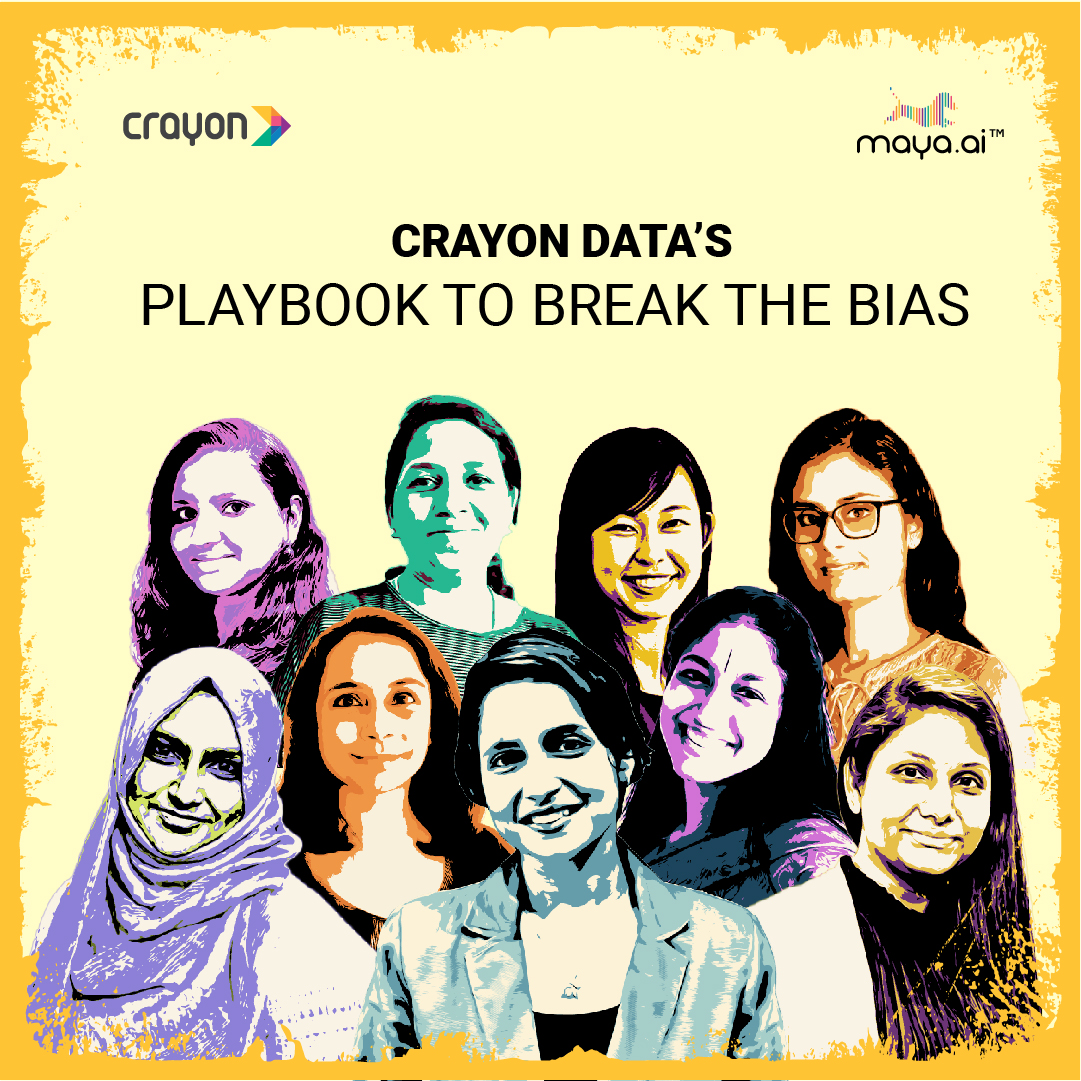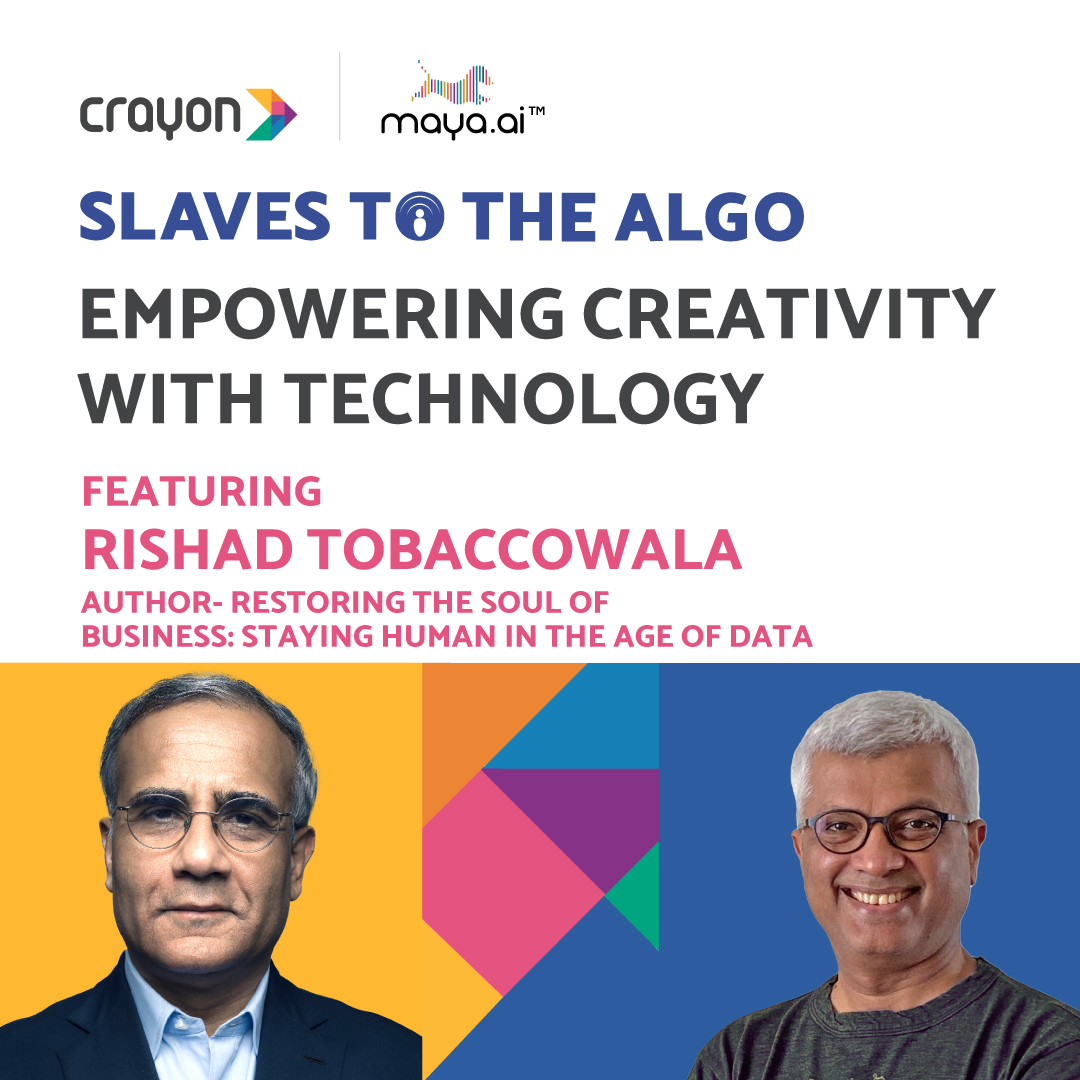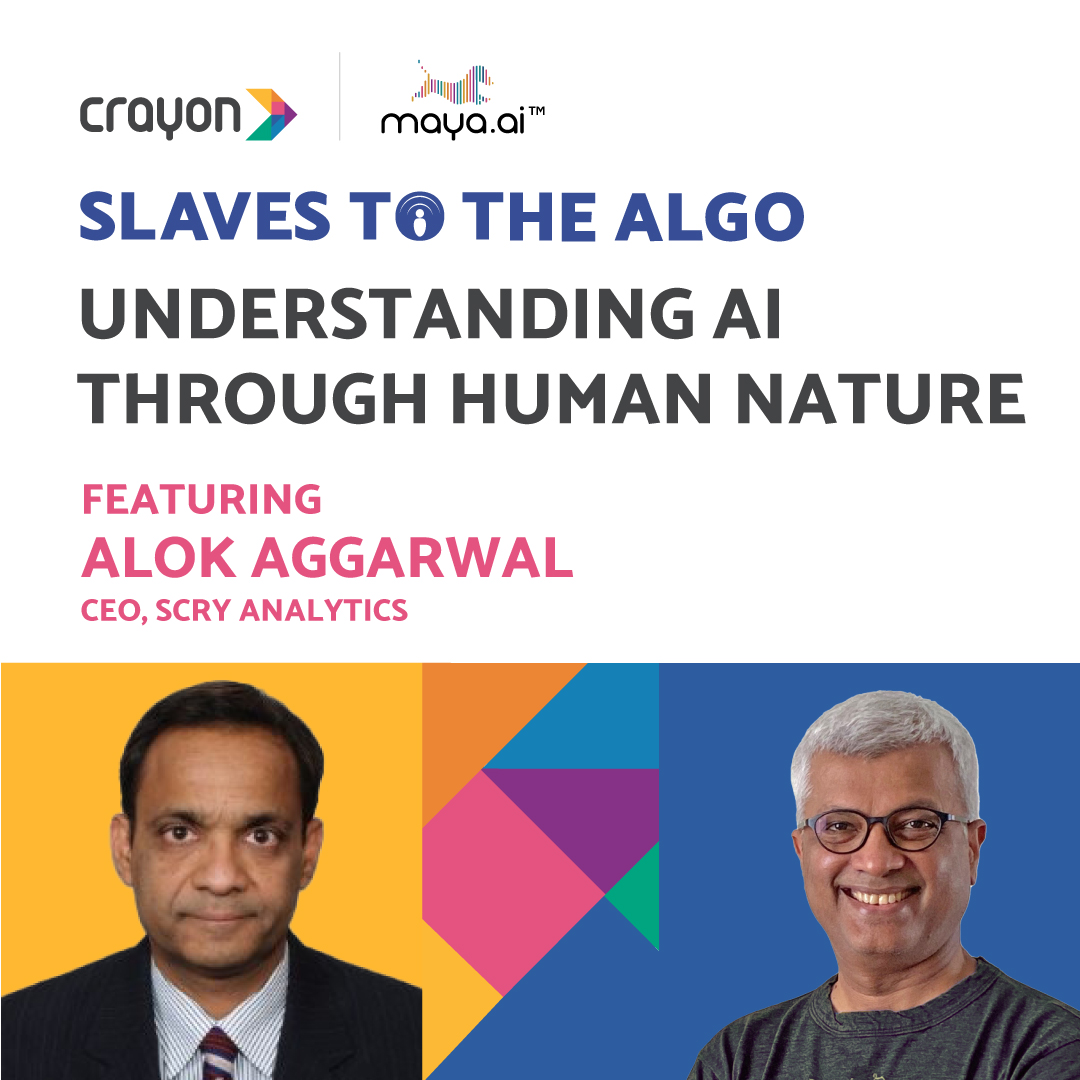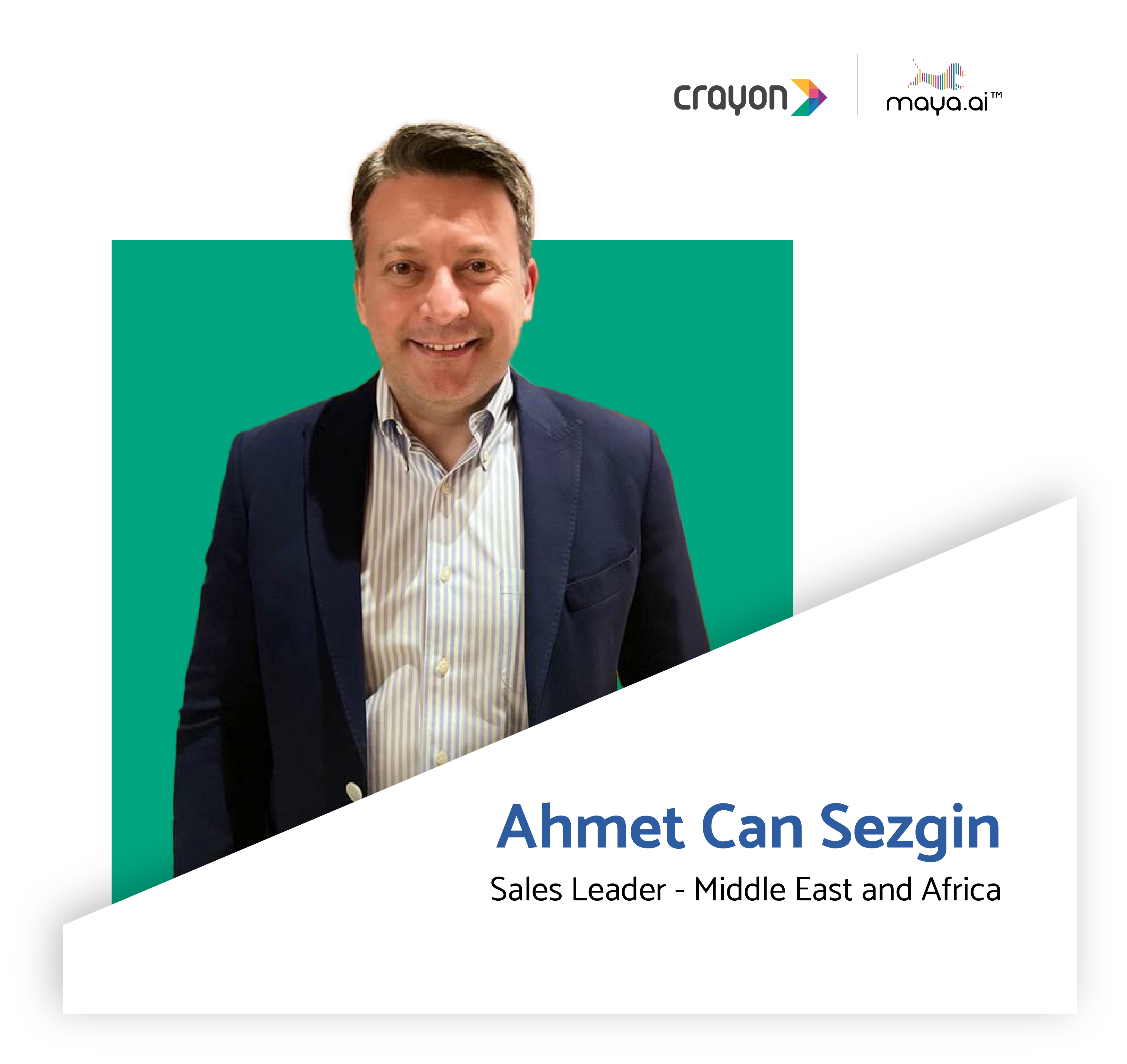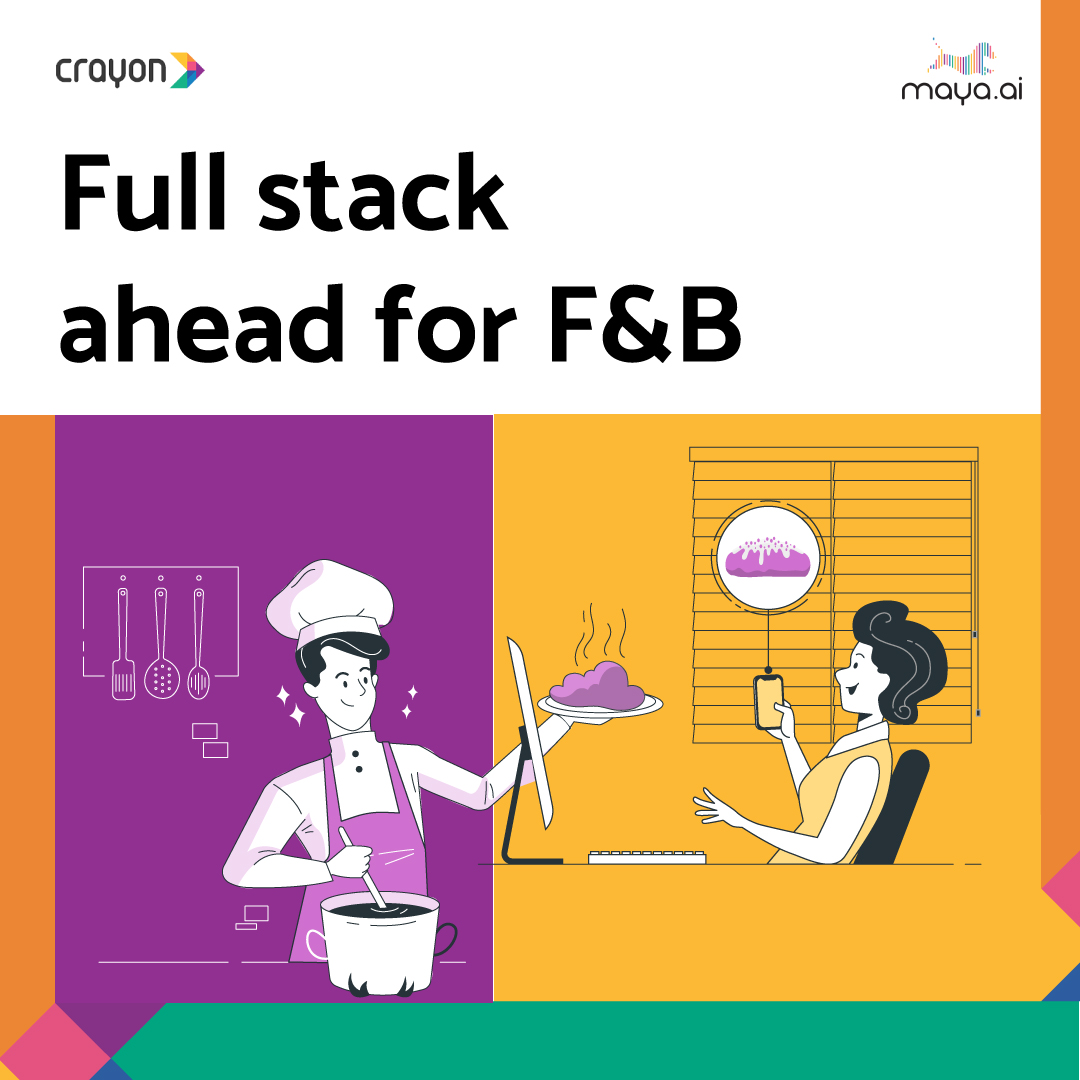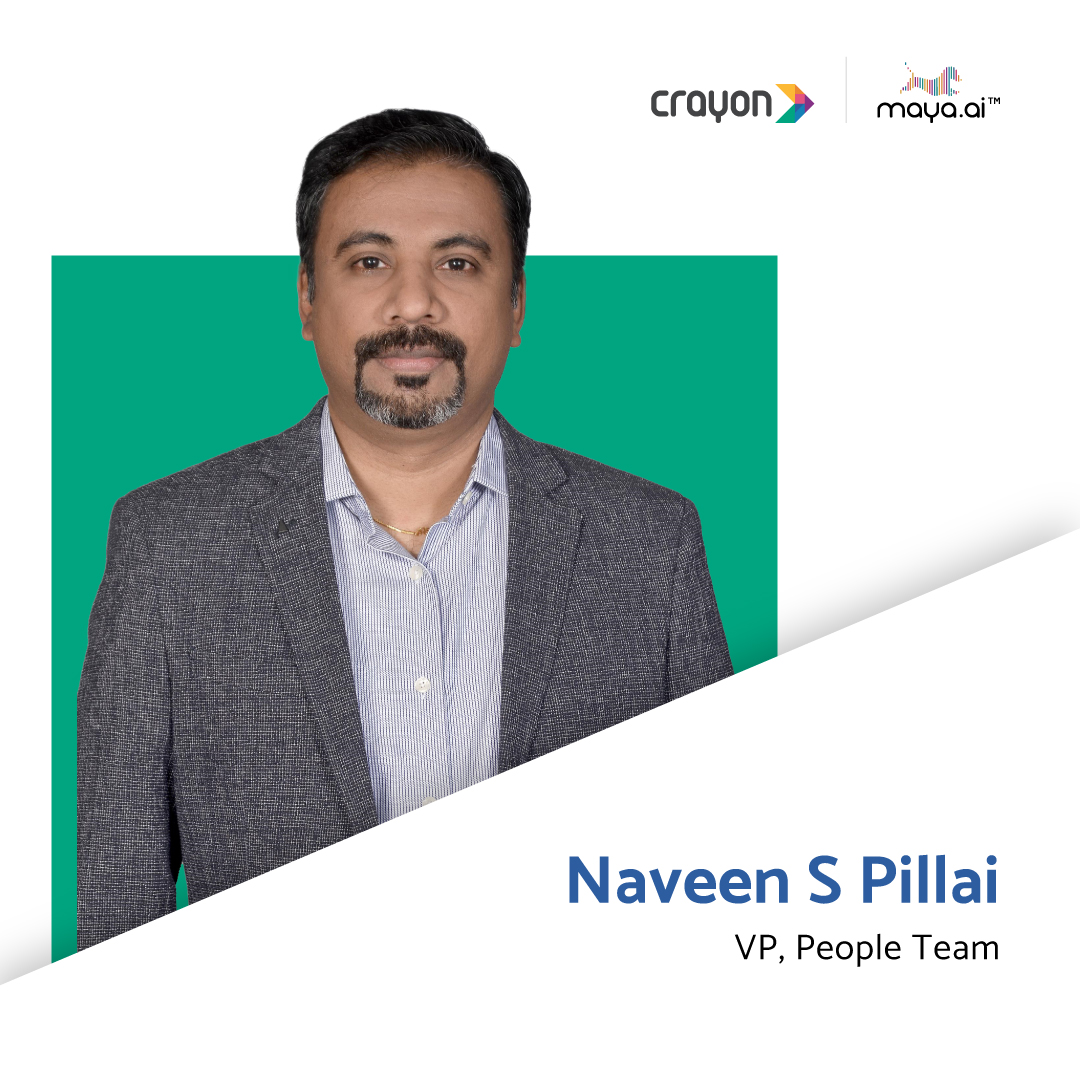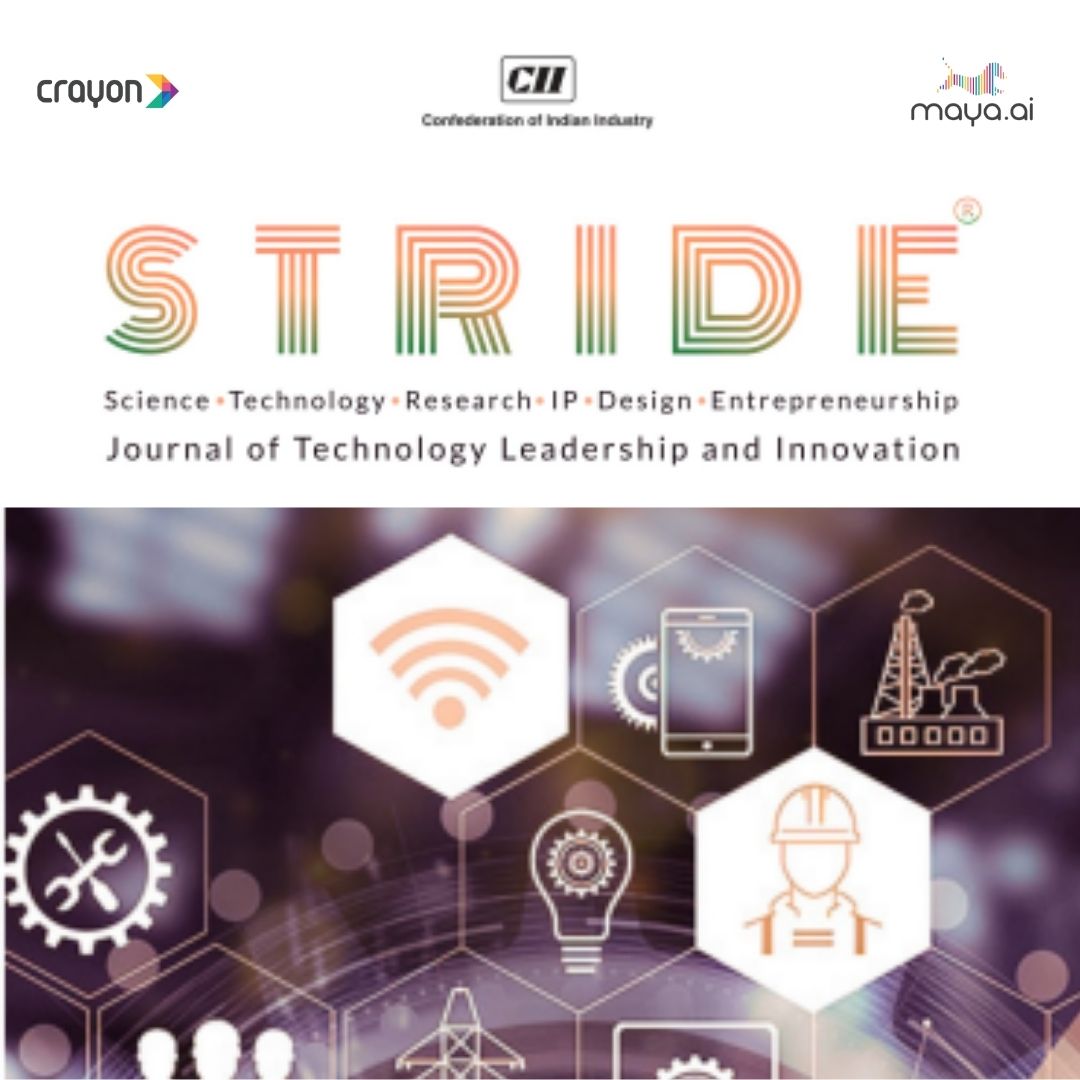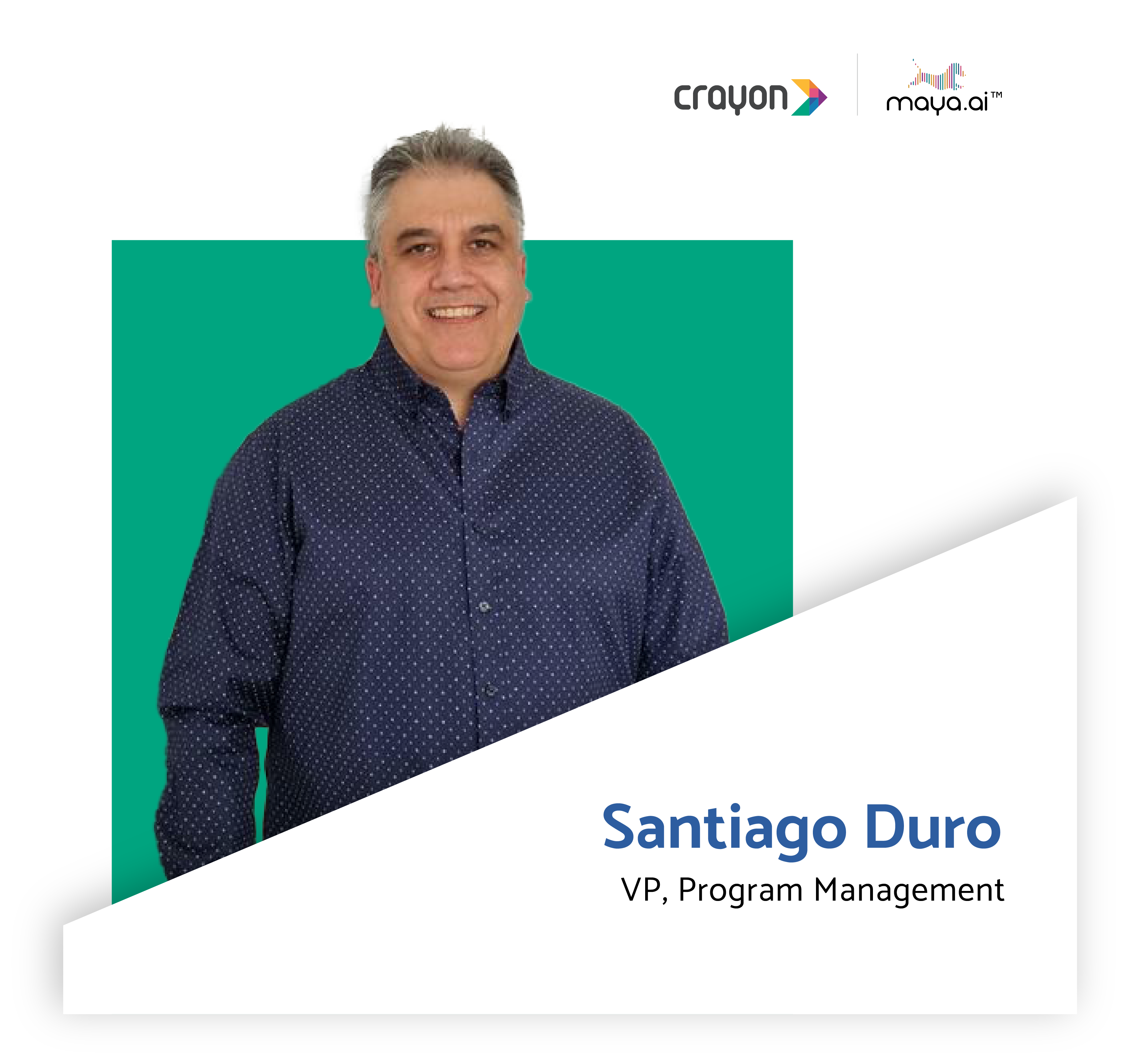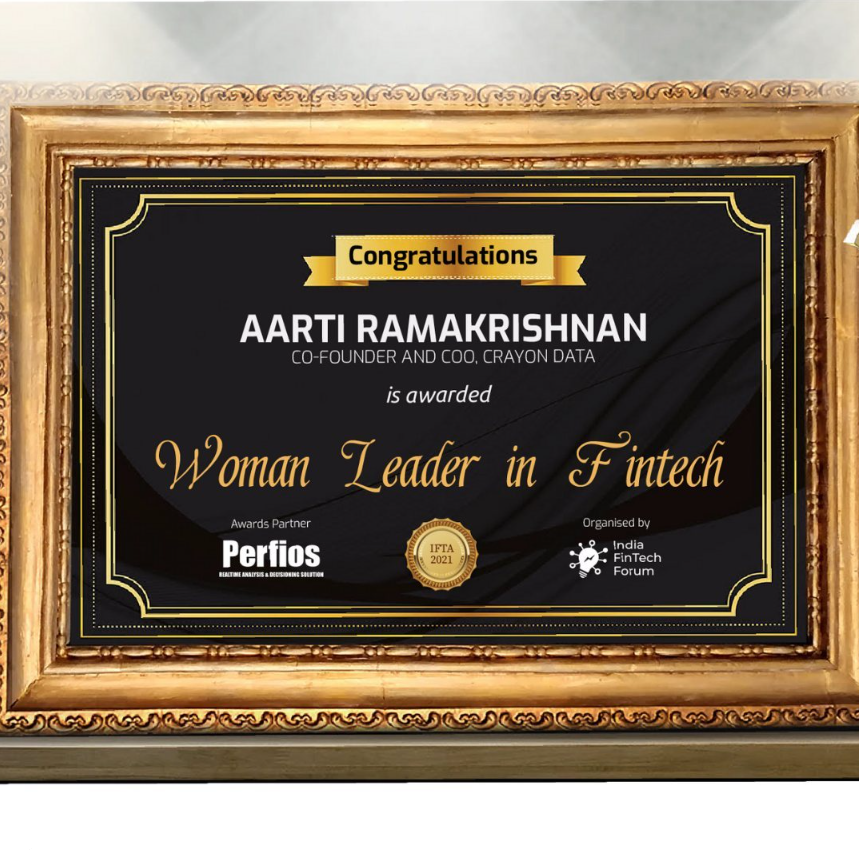Entrepreneur, leading technology professional, and Chief Growth Officer of GoPay Valerie Wagoner joins us in this week’s episode to talk about how AI is transforming various subsectors of financial services. With over two decades of experience in not just products, but tech company launches, Valerie emphasized the importance of building trust with consumers and staying true to the product experience even as data drives the decision-making process. In the first half of an eye-opening conversation, Valerie details her work at Credit Karma and how the company successfully unpacked the “black-box” that is central to the life of every American consumer: their credit score. Valerie then discusses the main theme of the age of relevance in the context of digital wallets and payments, which is that less choice = more value. The key to retaining users for all digital service providers, whether in retail or finance, is good, relevant suggestions. We ended this intriguing exchange of ideas with Valerie’s thoughts on some of the big changes she believes or hopes that AI will bring to the future of not just bits, but atoms businesses as well.
About Slaves to the Algo
Whether we know it or not, like it or not, our lives have been taken over by algorithms. Join two-time entrepreneur and AI evangelist Suresh Shankar, as he talks to leading experts in various fields to understand how they are using or being used by algorithms in their personal and professional lives. Each episode highlights how businesses can leverage the power of data in their strategy to stay relevant in this new age of AI. Slaves to the Algo is brought to you by Crayon Data, a Singapore-based AI and big-data startup.
Suresh Shankar is the founder and CEO of Crayon Data, a leading AI and big data start-up based in Singapore. Crayon Data’s flagship platform, maya.ai, is the AI platform powering the age of relevance.
How to listen to our podcast
Apple Podcasts
Spotify
Google Podcasts
YouTube
Full Transcript of S2EP2 below:
Suresh:
Hello, viewers and listeners I’m Suresh Shankar, co-founder, and CEO of Crayon Data an AI and big data startup, and I’m delighted to welcome you to season two of my podcast: Slaves to the Algo. Slaves to the Algo is my attempt to demystify the age of the algorithm. I plan to share my own learnings as a professional, but also those of leading experts in the field to understand how they are using, or being used by algorithms in their personal and professional lives.
And today, I’m delighted to have Valerie Wagoner, entrepreneur, business leader, and a force to reckon with in the technology industry. She’s got close to two decades of experience in launching and scaling, not just products, but actual companies. Valerie was in the valley. She then came down to Asia, co-founded Zip Dial exited that to Twitter, went on to work at Twitter and Credit Karma back in the valley. The call of Asia was very strong, and she’s now back as the Chief Growth Officer for GoPay, GoJek’s payments arm. Valerie’s also been consistently recognized as one of the top women leaders in technology. Welcome to the show, Valerie.
Valerie:
Thanks so much, Suresh, you’re very kind.
Suresh:
Thank you. First of all, a very personal question on data and AI because somehow I always think that you know when we are professionals we tend to react as business leaders, but we’re also affected as individuals by this. Could you share some examples of some great algos that you’ve seen that you know, as a consumer that you say hey wow this really makes my life so much more convenient, or I worry about something like this?
Valerie:
Yeah, I think, honestly, one of the reasons why I even joined Credit Karma, was because of kind of the power of what they’re doing to help us both product experience and AI to unpack this black box that is your credit score and this thing that’s kind of looming in your life that affects so many things in your life, at least in the US and a couple of other key markets. But that people just don’t understand at all, and, and is, you’d have to have a Ph.D. to really be able to understand that it affects every consumer every day. So, you know that one of the reasons that I even joined Credit Karma is because I kind of personally understood this like from my own experiences and saw that other loved ones of mine who had had either good experiences or bad experiences with how their, their credit had affected their lives and saw the power of that kind of platform to really do something meaningful.
Suresh:
And that’s such a wonderful example because this is a classic case where you don’t know how much one little score sitting somewhere in some computer actually runs our lives right? And we tend to look at all these things and they’re invisible to us but in some way they are actually in, we’re a slave to that credit card, you know, the credit five, five plus four algo in some ways, and you worked in several exciting industries actually you’ve been in marketing and digital engagement, you’ve been in social media, in financial credit, now in payments. And one thing I noticed is that all of these are both heavily dependent and highly powered by data, and each of them in some ways has been at the forefront of making us like I said what completely empowered by the data, as well as in some ways, you know, a slave to that algorithm. And if you look at your three separate, you know the three, the last three things that you did, ZipDial, Credit Karma, GoPay, how are AI and big data changed even in those last seven or eight years of this experience? How are people using it? Let’s start with marketing engagement and social media where you spent a fair bit of time. How has the use of data and AI changed in that?
Valerie:
I think it has been, it has definitely evolved to be more central. So, for example, way back when we started ZipDial around 2009/10, we were focused on users who are consuming are engaging but they’re just not connected to the internet yet. And, and how can we come to bring the user interface to them through more simple and accessible means like missed calls, text, voice. But we always had the vision of being a smart personalized platform that’s talking to a user, based on what we know about them, and every time they engage with a particular brand or product or piece of content, and then we learn a little bit more about them and we’re able to talk to them in a better way the next time. So, you know that that was, that was always kind of the vision and similar to what I said about Credit Karma, you can never AI is not the solution. It has to be AI plus the product experience, it doesn’t matter how amazing your engine is, you know, of your car if you don’t have like plush seats and beautiful design and good handling with the steering wheel you know so it’s, you know, it has to be a combination of the two.
I think what’s changed over time is that previously it was always lead with the product experience, and then AI is kind of an amplifier of that experience, making it more personalized making it more relevant, making it more powerful, but always the kind of an add on. Now what we’re seeing is the AI, because the technology is so much more available, and you know you don’t have to have a team of hundreds of engineers or data scientists building from scratch but there’s so much more that’s available to be consumed and built on top of. There’s earlier adoption, and in the life of a product and there’s also earlier and there’s also, therefore, design for the AI. You know, TikTok is a, is a kind of perfect example of this where literally the interface of the product is meant to optimize for what the algorithm can learn about you and your content interest, you know, because it’s full screen because it knows exactly when you move on to the next content rather than a scroll, you know, a feed.
Suresh:
Could you just elaborate a little? That’s fascinating you’re saying now, and I think you’ve got a lovely point you said product experience and data need to go together but earlier does product experience backed by data and now it’s almost data driving the product experience. And the TikTok example is fantastic because for me when I want to destress I pick up Tiktok, and I spent 30 minutes just going through, surrendering to the feed. How do we actually do that? When you say the data is being used to deliver the experience and that would be really fascinating to understand.
Valerie:
Yeah, or rather the, you know, a lot of the design decisions about TikTok’s interface are meant to amplify what signals the algorithm is picking up and able to process and use for you to give you a better-personalized experience. So again like an over-simplistic example but, you know, a full-screen video versus of feed that has maybe two and a half or three different content items scrolling through it like in your Twitter feed or your Facebook feed, etc. And how much you can learn about how much a person likes that content based on exactly the number of milliseconds, they’re spending with it. You know, it can more readily, it can more rapidly train versus say in Twitter’s case. I mean, obviously, a lot will have advanced since I was there. But so much was anchored on the graph, and the following graph and the content, to some degree also the engagement with that content, of course, but it’s real, and getting a user to build a graph, curate a graph, add or remove accounts from their graph, takes a lot of friction for a user, versus the friction of like swipe, you stay longer. Don’t stay long, swipe, you know.
Suresh:
So every time I do stay a little bit longer, it’s actually saying okay, it’s deconstructing the content behind it, it’s putting down okay Suresh watches these kinds of things a little bit longer than the other stuff, and let’s show him that way.
Valerie:
Absolutely.
Suresh:
Let’s just move on a little bit and I think you talked about Credit Karma, and for me, this is a fascinating thing because I think social media is the obvious one because everybody is kind of affected by it and by things like search. But credit decisions are not very well understood by consumers. You don’t know why a bank rejects you, you don’t know why something’s happened, I think, clearly, in the US the FICO score is the single biggest determinant of what happens in your life in many ways, but I think that is coming to Asia. So how does actually credit, an AI working differently now? What is Credit Karma trying to do to say, I can make this more accessible or I can make this more transparent to users?
Valerie:
Yeah, so the credits in the US ecosystem are were in ecosystems where there are strong credit bureaus that traditional lenders are using traditional or non-traditional lenders are using to underwrite make just underwriting decisions about you as a consumer, that remains a black box. But the first thing Credit Karma did was literally buy that data on a transactional basis every time a user signs up logs in, pulls their updated score, etc. They’re paying the Bureau for that poll data, but they’re there.
The first step is creating the product experience around that to unpack that score understand the factors affecting our credit score helping users understand the actions they can take that will meaningfully impact our score positively or negatively. That was more product experience. But where the AI comes in is in all of, the additional behavioral data that happens on Credit Karma. All the proprietary data, that happens on Credit Karma. Be that the way you’re using the products and the different kind of educational and coaching type materials, be that when you if you apply for a particular credit card via Credit Karma and whether or not you get approved for that card, you know, that, that signal itself helps build additional proprietary data on the Credit Karma site, which is really powering two things one is the primarily better matching of products to you as a customer. And the second is better suggesting things you can do to improve your effective score and financial well-being.
Suresh:
Let me just pick up the second aspect because I think it’s fascinating. Last year I had a gentleman who talked about Explainable AI, and he said way back in the 70s no food product came with anything on it and now every food product has a label, and he says Explainable AI is going to be in the future where literally every decision says here are the components of this so you can actually start to understand why and hopefully manage that better. Do you see that kind of thing happening in credit? Those people will be telling not just here’s your score, but here are all the things that you did that make the score what it is, and here’s the way you can do it? Do you think that future is coming anytime soon?
Valerie:
I mean it exists today with products like Credit Karma. I mean, or it has existed for you know, 12 or 13 years that they’ve been around, but that that is not but that again is not AI that’s more explaining the black box. But, but explaining the black box in a way that is, you know, kind of breaking it down for users into something meaningful and actionable. I don’t know if that answers your question.
Suresh:
But to some extent it is. In an Asian context you see this kind of a, you know, you’ve worked in India you’ve worked in Indonesia, you’ve obviously been fairly you know cognizant of how these markets are going do you see that kind of a movement happening? Especially with such a large underserved segment out here in Asia.
Valerie:
Yeah, what’s interesting, so where in many markets like in Asia or other markets where traditional credit bureaus don’t really exist or don’t serve the mass population, you know like there are four big credit bureaus in India but they only score like a fraction of the population, right? So, the interesting thing and in other in more emerging markets or is that alternative data for credit scoring. Now the question is, does, does the score itself matter? And it doesn’t. Now, you might use the score, and mechanisms around the score as part of the product experience for the customer. But, or maybe even as part of the product experience for the lenders that you’re supporting on the platform. But fundamentally there are all kinds of alternative data, be it your location data your social network data, your different bank account transaction data that you’re sharing your telco data, like, there’s, there’s so many different sources and alternative data that a variety of companies are trying to package into better credit scoring on people who otherwise, you know, are not, you know, not captured in the traditional kind of data sources.
Suresh:
And you had some fascinating experience there because you also worked in micro-finance. Do you see that actually the fact that there’s a mobile phone revolution, most Asians are on mobile phones, smartphones are there. The fact that there’s so much data available and all of that. Changing credit completely even in the Asian context. I mean I know it’s just starting to happen, but do you see any big movements of companies that are doing very different things in this space?
Valerie:
Yeah, so I mean GoPay is a prime example of one, I think, in Indonesia where the only, you know, a lender that grew its loan books significantly through our pay later product and versus others that either, you know, held reduced or shut down entirely at the end. That has to do a lot with, you know, the data we have the way we’re smartly making decisions about customers and expected the loan book performance. So, GoPay is a perfect example and the kind of signals we’re using are everything, all of your signals around how you’re using Gojek as an app overall, all your signals around how you’re using GoPay, the tons and tons of different signals that we can pick up across the broad set of services of Super App, and the payments platform.
Suresh:
And it’s interesting because, typically, you know, all the super apps and all the payment firms started off by just saying, I need to offer payment. Now, you’re doing lending on that and now I think you know, in GoPay. you have done investment products insurance, etc. So in some ways, it’s becoming, you know the whole central thing of saying, if I know everything around you and your mobile phone and the services you’re using, I can literally construct a financial life around that using the data that I have, right? So how are you doing with, you know, you’re the Chief Growth Officer of GoPay, Indonesia is probably one of the largest unbanked populations in the world just like India is, so can you tell us a little bit about what you guys are doing out there to grow? How you’re using data and how you’re trying to change the landscape, using data?
Valerie:
Yeah, so we are, so fundamentally the payments platform is connecting and processing payments for merchants on the acquiring side and consumers on the issuing side. There’s a huge body of work and technology from a lot of smart people who are doing risk and fraud-related work, right? Fundamentally as a payment platform or financial services advisor or financial services, product, you have to earn the customer’s trust, period. The moment, you have any question mark around trust and the platform and how people’s money is protected or secured it’s a huge problem, right?
There are, you know, bad actors who tried to, you know, game the system. So, you know there’s a lot of sophistication and all of the risk modeling, both from a kind of fraud protection side, as well as from a credit scoring side. So, those are kind of two distinct areas where, where a ton of AI is being used. And then on top of that is, is the personalization of the consumer experience to be most useful and delightful to customers. So, if you know the, both in terms of what is bringing value to customers as well as what is bringing value to customers in a way that is economically beneficial for the company, and helps the company grow. You know, if we’re, you know, we, we do a lot of work to detect say okay this type of user has used these types of payment services with this type of frequency and these types of merchants and locations they might also be interested in X, Y or Z service that they haven’t tried yet, and try to introduce them to those additional payment options, or this user seems to be behaving in a way that we’re predicting that they’re going to turn from the platform. So what are the types of interventions we can build into the product to help them stay on the platform?
Suresh:
In going back to something you mentioned earlier, again, you said with the design of the product is now being more and more led by the data that it generates and you can do that, is that the way you’re approaching this now, which would have been very different from let’s say a wallet built 10 years ago? Which would have focused on can I get a lot of merchants and can I get, you know, a very convenient interface? Would you say that this is all now going to be about are the data people the guys leading the design in some ways are sitting down and working with this?
Valerie:
No, not yet, not yet. I would say where I remember you know GoJek as a going on the 11-year-old company right and the app is, you know, some six, seven years old. And so the, I think, big bets we make in the future, to, to really change the product experience, we’ll definitely embrace that, but that is not exactly how it operates today. Today, it is product experience first. AI amplifying today. I think in the future, certainly, it will be new companies that are starting today, certainly will be leading more with AI.
Suresh:
I’m going to come back to this in a moment but it’s a fascinating point you know you talked about product design and the data and how it is kind of the switching roles. I was talking to somebody who said, It’s not just the data, it’s also the human being, using that. And it’s so funny when you talk to people who are business people who are not necessarily the geeks, everybody says there’s right brain, there’s the whole business side there’s the people side there’s the experience side, that without that really good you know having all the data and having all the AI doesn’t really work because you’ve got to make it work for consumers. And it’s a fascinating thing that’s coming up, as I’m doing this podcast because every time you go in and say okay, it’s all about the data and the AI, and people say no it’s not that it’s the brand it’s the trust, it’s the experience of the people. So it seems that those basics still do matter in the age of AI, would you agree? Though we are more led by data that is all about also the other things are still fundamentally important?
Valerie:
Yeah, it depends on what problem you’re trying to solve for customers, and, and if your tech talk and your, your passing time and de-stressing and, you know, enjoying the content that’s relevant to you, the AI absolutely must lead. But if you are, you know, if you need to get from point A to point B, and you’re booking a ride-hailing, you know, ride. AI needs to be, you know, AI is, is helping make sure that the routing of drivers as fast as to you so it’s, it’s, it’s not the primary action, it’s an enhancer of the experience. You know if you’re, I think there’s also a difference between. Is it the core service or, or is it supporting a means to an end? Like what does the customer actually want to get out of it? Even in some ways the, you know, the with say lending and credit scoring, the customer doesn’t care about getting a loan, they care about buying the thing they want to buy, they care about managing their money in a month they care about saving for their kid’s education, right? And, and the loan product is kind of a means to an end. And so, you know the customer doesn’t need to the customer shouldn’t have to think about the AI in that sense.
Suresh:
True. True. I’m gonna come back to this idea of digital wallets and I am gonna draw parallels between the US and Asia and you think you’ve been one of the people who’s worked in both right. There’s this fascinating article that talks about the fact that about 10-15 years ago, the most important thing for consumers was to increase choice in the product experience right? I need to make more and more things available for you, you can buy from anywhere, you can listen to any kind of music, watch any kind of movie.
But one of the contentions is the author Scott Galloway makes is that it is now becoming about the reduction of choice and making it relevant, because when you have too much choice, in fact, the consumer experience suffers because you’re looking a lot you’re reading a lot of conflicting information, and therefore the whole idea is that the companies that are going to create the greatest value, will the people who reduce choice and make it very very relevant to every individual, make it like a recurring revenue bundle. Do you, again, you know as you’re doing some things like that in Indonesia or India, I think in the last five to 10 years people have put an endless sale in front of consumers whether it’s a ride-hailing or e-commerce or restaurants and all that. Do you think that we’re going to see that shift towards the reduction of choice and relevance? Where do you see that happening in the wallet industry in the next two or three years, where do you see that going?
Valerie:
Yeah, I 100% think that too much choice is bad for the customer and this is and this is just, you know, sort of very old science for very traditional companies like, you know, retail, online retail and you know where if you have like, you know, four different types of oranges, if you have, certainly if you have more than four different types of oranges with four different price points it’s like overwhelming and the customer is not going to buy oranges. But if you have two, high price low price, then there’s maybe organic not organic, the customer will buy more oranges right and there’s a ton of, you know, sort of retail science that backs this up, that too many choices are too much. But the beauty of technology platforms is that you, can support choice without shelf space cost, right? Then, the nuances are you need both. You need both, in order for the customer to trust your recommendations, among the few choices right. We trust Amazon when they say recommended products or people who bought this also bought that because we know that Amazon has everything. You know, we’re not going to spend the time and effort digging through everything where maybe only a tiny percentage of customers are. But we know everything is available but this, this, the choice that’s being suggested to us is tiny.
Similar to Credit Karma. Then, you know, when, when you use Credit Karma, they’re not saying here are all the dozens of different credit cards, you might choose from which one do you want, they’re saying, this is the one we recommend for you. This is the specific one that we think is best for you based on your profile and based on your needs. If you only said this is the one, and you only had one or two in your entire marketplace that would not be enough trust, then it feels like you’re just hawking a product, right? So customers know that everything’s available on the platform on Credit Karma, but Credit Karma with its intelligence is saying, hey, guess what, we know a lot about your credit profile and this is a card that you are extremely highly likely to get approved for and that and that we think is a good fit for you. And that’s another very specific example where the product experience tied with the AI matters so much. Like if you even if you have all this intelligent AI that says this is the right product for you that you’re, that like this is a good product for you versus, which we know in the backend as a customer is highly likely to get approved for if you don’t tell the customer that, they’re not going to transact. But if you tell the customer pre-approved or highly likely, or excellent odds of getting approved, like that tiny nuance in the product experience leads to the actual transactions.
Suresh:
You made several points that are deeply interesting to be the right one is the fact that you must have an assortment of sorts, which is reasonably wide a pretty, pretty wide for people to want to come to you. So that you know that there must be trust in the recommendation, you used to trust a couple of times at different points in this conversation. And this is a point that sometimes I think in the data and AI world the people are completely approaching with a very left-brain mindset. People tend to forget that the purpose of this is that you know when I show you something you must believe that it is relevant, otherwise you don’t trust the algorithm, you know. You have to build trust and algorithm just like we used to in brands. And how do you as a business leader? How are you trying to kind of go in there when you’re talking to people saying let the algorithm do this you know we got to create the trust?
Can you give us a couple of examples of how we are trying to, you’ve seen this trust-building activity, if you will, inside your company or when you’re pitching it to a client or putting it into a product? How do you actually build those things?
Valerie:
If anything, that the slight nuances, it’s actually, you can’t give customers a reason to not trust you, right? Because a customer isn’t looking at what you’re recommending and saying, do I trust this recommendation or not? But, the second it’s not relevant to them, they lose trust or the second that’s it’s you know a bad recommendation, like this isn’t, this has nothing to do with me, why are you showing me this?
It’s actually flipped, especially going forward in the future. I think there was an era of time where we all knew that everything we experienced was like Yahoo banner ads and then all of a sudden when it was felt relevant to us, then it becomes native ads in your Facebook feed and it feels sort of delightful and feels like the content that was a shift where were we went from like things that we knew for sure were mass market, and then it became more personalized. But now we’re in a place where consumers expect that if something is not relevant to them they’re actually going to lose trust in the product, that sort of goes that if you’re doing something that is not right. That’s why AI needs to be early in the strategy.
Suresh:
That’s a really lovely way of looking at it. I mean one of my favorite examples of that Val is that after 20 years with four credit cards and one bank in Singapore, they still ask me to eat at steak restaurants and after thousands of meals they haven’t figured out I’m vegetarian! But it’s a lovely phrase for people that are listening to this. It’s not about the AI building trust, the consumer knows that you know, if you’re doing something that is not right, the loss of trust is much faster and steeper in some ways than the slow accretion of trust that you’re building.
But, Val, I think we could keep talking forever. I want to pull back and ask you a couple of questions. Over the course of your career, you’ve seen a lot of changes in how data-savvy, the how data-savvy companies and consumers are becoming. If I were to ask you what future you were looking at, not necessarily linked to credit cards, you know, credit decision-making or payments or social media and say, what would be some three big changes you see that AI, algorithms, data will cost in the next three years? What would you make three big bets on?
Valerie:
I think, in no particular order, and I may not get to three and but one is taking further, this idea that consumer expectation is that things are relevant to them today. And, but taking that further and saying, AI gives us the opportunity to actually create relationships with products and companies rather than transactions with products and companies. So, you know, rather than going from a world where maybe we’re coming for the content or the social network and we’re getting ads pushed at us and those ads become increasingly relevant. But you know, the AI, maybe the experience is not at all about pushing the transaction, but, like let’s say, Credit Karma is a pretty good example of this, but not quite all the way there, like if you had an app, and there’s a bunch of different apps like Credit Karma actually even acquired an app called Penny that was kind of a chatbot. Imagine like you have this experience where you can ask any questions and you can have this community and you can just talk about, let’s say financial wellness and like personal finances and just trying to learn and you might do that for years and years and years and the app is getting to know you more and more and more.
Then at some point, you’re going to need some product or service. And this, this personalized relationship you have with the service can’t suggest to you a product or service, and then monetize that, if you actually buy it or transact. Or you know, the, you could probably rather than say home-buying happening as a, an arbitrage between like SEM marketing, and, and, like, and conversions, you know, what have you instead had a, you know, a service that was building a relationship with you around like family planning and marriage and like, and then at some point it knows you enough and knows you’re gonna need a home. And when you have questions about like oh no I’m growing out of my house, what should I do? Then you might get led to a house and you might buy it and then the company makes money, right? So it’s kind of AI, being more accessible, will allow us to, again, put it front and center, as we’ve been talking about. But in an even deeper way that makes it truly a relationship with the company.
Suresh:
Are you building that kind of thing in your role in GoPay? Is that what you want to create out there? Is that what we should be looking to?
Valerie:
That is, I think an aspiration that it will take a lot of work. Again it’s a, you know, it’s, in some ways, change management and an existing high growth product, and the bottle is in some ways harder than and starting from scratch with, with a certain vision. You know, but that’s one more on the, on the kind of consumer side where, where the, you know, AI can power, true, what feels like a human relationship with products rather than transactional nature of the business. Versus, which in some ways is harkening way back to, like, you know, the local butcher who knows you and your family should suggest to you exactly what to, you know, or in your case, the vegetable vendor.
Suresh:
You were quick to personalize there. One more question for you, do you have any fears? With so much data being collected, companies, digital giants, governments, any fears that you have that, this is going to be weaponized against the consumer?
Valerie:
Not en masse. I doubt that en masse. I think there is always a risk of, you know, biases, which are and this is not a new idea right but like biases and in what different algorithms predict about different people based on what data is trained on, and, and if you have biases and or data inputs, you’re going to get biases in your outputs, right? And that can negatively affect some groups over other groups or some profiles over other profiles so that is a risk. I have to say at a personal level, you know, I use iOS on my phone and laptops we have, you know, a shop on Amazon like crazy and have a prime user, Google of course for everything, but we explicitly have a Cortana in the house, rather than in a cohort and uh you know and I just generally avoid using Siri, because it’s, you know, I’m like, let’s not give every, you know, let’s not give one company everything.
I don’t think there’s any real, tangible fear but it’s like well I hedge my bets at a personal level. But you know I think another thing that excites me is that there’s right now so much of AI is predominantly driving bits businesses if you think atoms versus bits, right? And there’s increasingly more in terms of introducing into atoms like, you know Zilingo for example, using technology from the company they acquired in their, in their software for factories to be able to detect whether or not a garment has a flaw in the garment. Is the seam straight? Is the zipper on correctly, etc.? Is it missing a button, right? And using it to be able to detect those things and that’s a that’s what I would call an atom’s business versus like a TikTok, which is only a bits business.
So I think that that is very exciting. That will continue to deepen into atoms businesses and then you get into spaces that are even harder to tackle like agriculture, right? And if you think about like, there’s a company in Indonesia called e-fisheries, which is using technology to figure out how, how much and how often to feed the shrimp and shrimp farms, right? Because like the food going into the shrimp farms is the most costly thing, right? And also understanding like are their diseases, popping up in different ponds that you need to address. And so if you can, if you can use AI to better monitor and suggest like how much inputs to use in agriculture to do it smartly, or, or you can imagine like applying those to sustainability or like is a mango tree or a coffee bush or like ready to harvest or not? Or, which bush within the orchard, right? Or, you can imagine applying this to sustainability-related issues, right?
Like, today, if you want to make sure that your supplier of coffee or cocoa is not using child labor, well you can pay millions of dollars to organizations that send a manual human to go audit at a scheduled time and guess what the farmer is just going to hide the children scheduled time.
Suresh:
Or, you can put a drone out there and see everything.
Valerie:
Precisely. But like drone technology is getting cheaper, AI is getting cheaper and more accessible, fly a drone over, you know every single day at random times and you’ll figure out like, and you can create traceability in like, you know, like sustainability issues and anti-child labor in agriculture. So that’s that I think is super exciting that it will be really deepening into like applying the technology deeper and deeper and deeper into atoms-based businesses that can really really have a major impact.
Suresh:
I guess it’s hard, you’re an entrepreneur, so I don’t think people like us will ever have a shortage of ideas with all the things that you’re talking about. I’m sure we could keep on talking forever but, and maybe we will do another podcast talking about just the new ideas in AI. But you know it’s been fascinating talking to you. I think two or three things that were really stood out for me are this idea that product experience used to lead the data, and now it’s kind of switching. The fact that trust in the AI system can be lost very quickly. And the point that you just ended on is when is AI going to reach the world of atoms.
I think these were three big takeaways for me. I’m sure there were others. Valerie Wagoner, entrepreneur, Chief Growth Officer at GoPay, one of the top women in AI and tech, it’s been a pleasure having you onboard about the show. Clearly, you’re not a Slave to the Algo, you’re a master of one. Thank you very much for being on the show.
Valerie:
Thanks, Suresh.
Suresh:
To my viewers and listeners, Slaves to the Algos is available on YouTube, Spotify, Google, and Apple podcasts. We release a new episode every Tuesday. If you enjoyed listening to Valerie, and this week’s episode, don’t forget to rate, share and subscribe, Stay safe in the age of COVID, and stay relevant in the age of AI. See you all next week. Thank you very much once again, Valerie.

